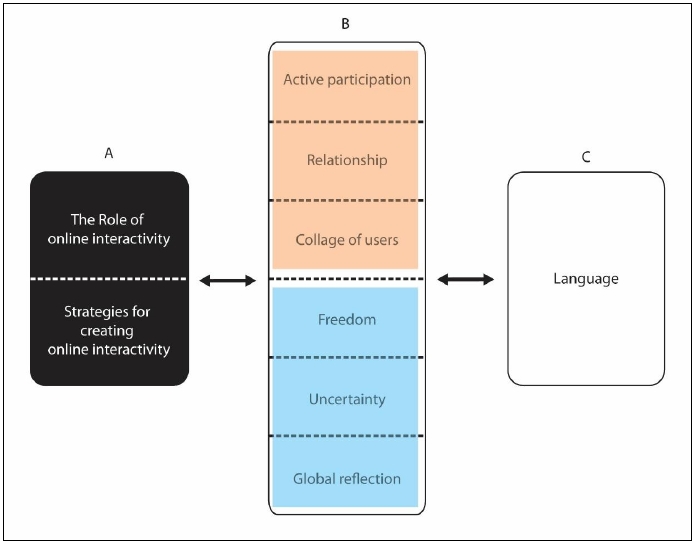The Role of Interactivity
THE ROLE OF INTERACTIVITY IN THE ARTISTIC PROCESS OF WEB-BASED ART: CASE STUDIES OF THE DIGITAL MEDIA ART PIONEERS’ PRACTICES AND STUDIO TEACHING by Chia-Ling Lee
Dissertation Committee: Professor Richard Jochum, Sponsor Professor Lyle Yorks
Approved by the Committee on the Degree of Doctor of Education
Date 17 May 2017
Submitted in partial fulfilment of the requirements for the Degree of Doctor of Education in Teachers College,
Columbia University 2017
This qualitative case study began with a question: How can interactivity be taught, in particular online interactivity? Additionally, how does the teaching artist’s practice of online interactivity inform their studio teaching of interactive related themes? As such, this study first discloses patterns of the three select digital media artists’ artistic experiences of online interactivity. Then, this study aims to explore the reciprocal relationships between their practices and studio teaching. The three participating artists include: Lynn Hershman Leeson, Rafael Lozano-Hemmer, and Martine Neddam. The three selected artists have worked with digital media, with a focus on the Internet and online web browsers since the mid to late-1990s, when the Web was in the early stages of its public access and information deployment.
In order to probe into this study’s research theme through the artists’ own voices, this study conducts in-depth interviews via email and Skype meetings. This study also employs In Vivo coding for data analysis in order to closely examine the interview data. The findings present a unit of discovered key concepts in response to the central research question and its sub-questions.
In response to the role of online interactivity in the artistic process, four key concepts have emerged: active participation, relationship, freedom, and artistic language. The artists believe that the creation of online interactivity has its roots in critical reflection of digital culture with humanistic views. In regard to pedagogical and instructional strategies related to the participating teaching artists’ practices of online interactivity, the three primary patterns discovered in this study are: artistic experience, problem-solving and dialogue.
Surprisingly, the findings show that the artists’ responses to their pedagogies present a general view of studio art reaching, rather than an emphasis on teaching online interactivity in particular. The artists described that their pedagogies are informed by their practices, which deal with different challenges in a problem-solving process. These problems cover technological skills, practical matters, and mindsets. For the artists, their role of the artist-as-teacher is to guide their students in developing the ability to think holistically, and give them problem-solving skills in the students’ individual artistic processes
Copyright Chia-Ling Lee 2017 All Rights Reserved
The complete dissertation can be dowloaded here: Lee_Chia-Ling_Dissertation
Or you can read it in this site: Proquest


